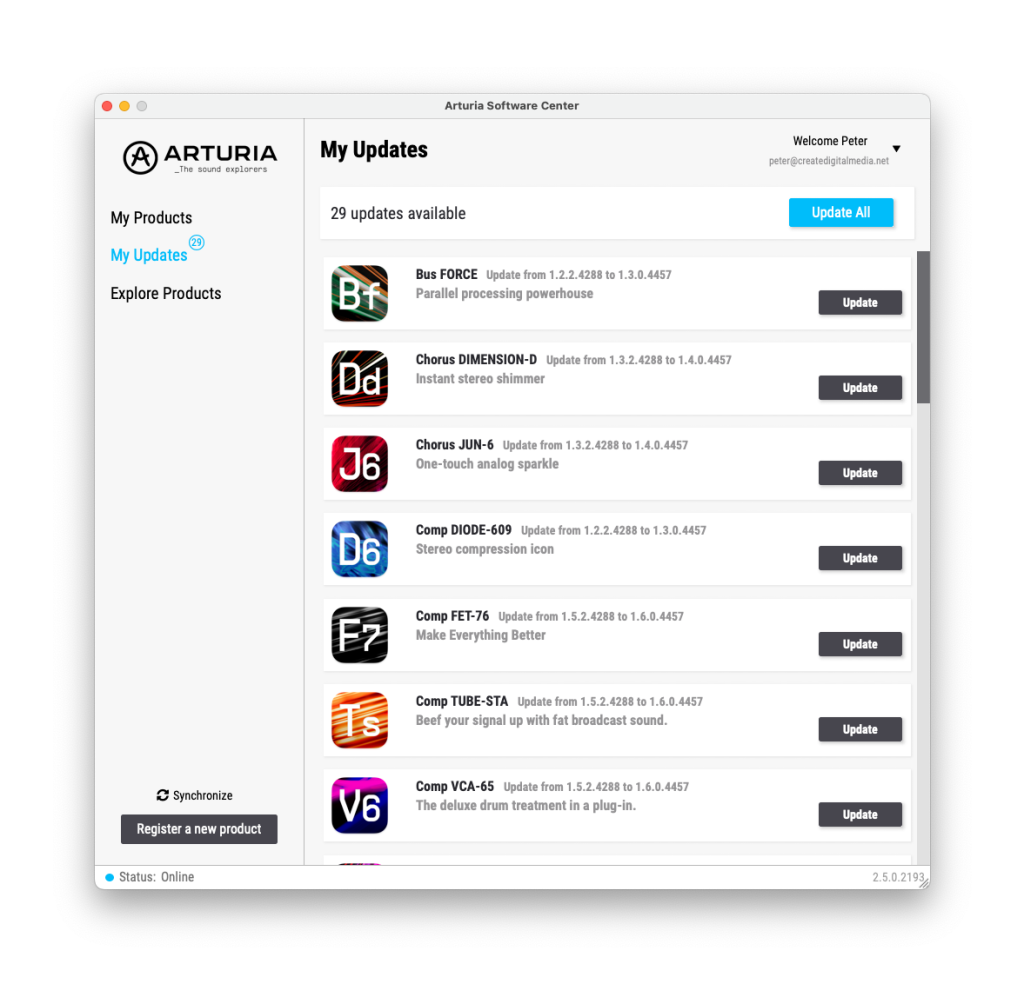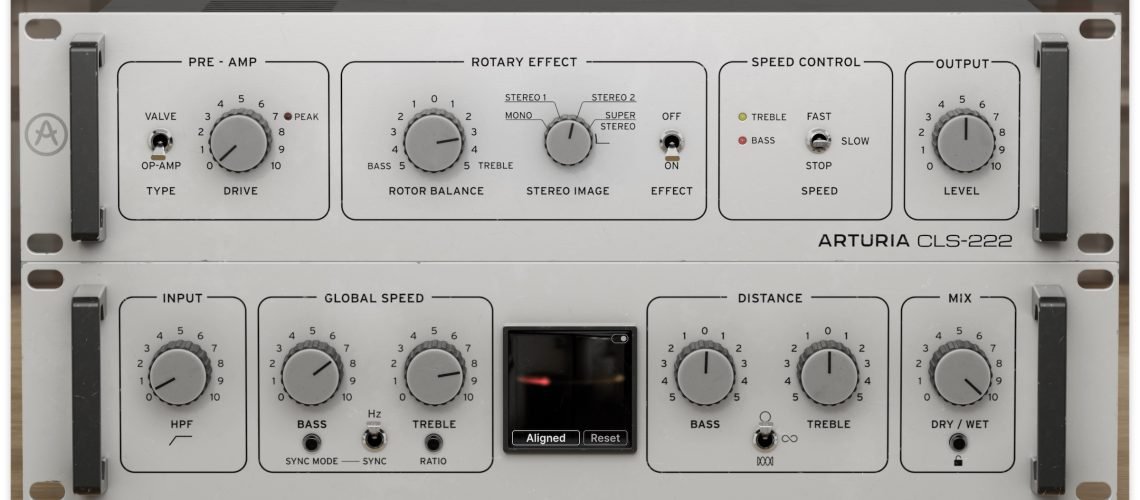Arturia just refreshed their FX Collection to version 4. That adds all the newest stuff, including a few I’ve written up here – plus one surprise, the new _Rotary CLS-222 emulation of the Dynacord emulation of the Leslie speaker. Here’s what’s new.
So, first up, you do get the addition of some of Arturia’s recent stuff, as expected. (See my reviews below.)
- _Dist COLDFIRE double distortion / multi-effect
- _Filter MS-20 (which was free when launched, but if you missed that)
- _Rev LX-24, their expanded Lexicon 224 (unauthorized, so only I can say that)
And, look, I definitely rinse the Coldfire and get a fair amount of use out of that LX-24 (among some other reverbs).
There are also enhancements to existing effects, meaning today’s news is relevant to basically anyone with Arturia plug-ins:

- Overdrive gain compensation on _Bus FORCE (which has made it far more practical)
- Updated modulation on _Efx FRAGMENTS (that’s the beautiful granular effect; I use that one a lot, too)
- Oversampling options on Rev SPRING-636 and _Bus FORCE
- NKS VST3 and Mac M1 AAX support
- Dynamic plugin window resizing
… and so on. Also, they’ve recently added high-res 4K UIs across the board, they’re fully compatible with Apple Silicon. Notably, the full suite has complete accessibility features with real-time text-to-speech feedback (as introduced on the V Collection). If any readers are using that, I’d love to hear about it.
Okay, onto the new one, and I’ve only just begun testing this one so – not a review, just first impressions. The _Rotary CLS-222 is based on the Dynacord simulation of the Leslie. That is, it’s a simulation of a simulation. (Or to put it another way, this one should make Jean Baudrillard’s head spin! Get it? Sorry, uh, post-structuralist dad jokes.)
The Dynacord itself was produced from 1982 until 2003, so it’s a sort of vintage simulation. And it’s got a sweet sound of its own. I mean, this sounds a whole lot like a Leslie, if somehow a bit clearer? It’s more Leslie than Leslie.
Whatever you’re doing in your day, take a moment for this video. Trust me. This will chill you out.
For the original hardware, look to Music Technology from December 1988. (On the cover: “TECHNO! Electronic music from Detroit.” Apparently MT in 1988 figured out what some folks can’t now, which was that techno was originally Black and from Detroit, but I digress.)
Nick Magnus was so excited that he got positively spiritual:

Every now and then a musical prayer is answered… Affordable digital reverb was another of the marvels we now take for granted. Up to now, however, the “Leslie”, or rotating speaker, has managed to elude convincing simulation, with little more than a wobbly chorus of auto-wah as the end result. It looked like the only way to get that most wonderful of sounds was to lug around the real thing with all the hernias and bruised fingers it entailed. But now you can throw away that truss, Neddy! The wunderkind at Dynacord have answered our prayer.
Hallelujah!
Dynacord CLS 222 [MT Dec 88 – mu:zines]
I’m doing what any CDMer would do, of course, which is to try this on totally unrelated synth sounds. But what the Arturia gives you is the full CLS-222, but expanding on most parameters:
- Valve preamp model
- Stereo width
- Bass and treble rotor speeds with extended ranges
- Syncable rotor speed (for tempo-synced rotation)
- Visualizer
- Distance controls, with two new distance models
There’s a lot to play with here, just adjusting the speed from slow to fast. Adding tremolo after a reverb also works, which you can do nicely with the LX-24. (I’ve been playing a lot with Tremolator from Soundtoys, too, so – swap that for the CLS-222, or add the CLS-222 to Super Plate. Yum.)
The new distance settings are interesting, too; we’ll see if I have some time to whip up a sound sample of that or if I just get lost in some spinning effects and you don’t hear from me for a while.
Take a look at that advanced panel:

The key here is, you can really crank speed (via bass or treble) and stereo width (up to “super stereo”) way past the normal parameters. That turns this into an interesting modulation effect generally, as well as a recreation of the expected historical sound. Note the shape switch in the Distance section – it gives you three options, comb, horizontal 8, and circle. Those sound particularly pronounced as you turn down the speed (and/or turn up stereo width).
Also take a look at the bass / treble rotor balance, plus the controls for global speed you get when you open up the advanced panel. There’s a “ratio” button that sets treble speed at a ratio to the bass speed setting – even independent of the host sync switch.
And incidentally, this can sound really nice with Ableton’s Drift, as mentioned yesterday, as it adds another layer of processing, especially on pads.
I don’t know why they didn’t include an LFO, to be honest, but – I dropped this in Live and added a favorite Max for Live LFO.
Full tutorial from Arturia:
Nope. Wait. I’m going to embed it again.
It’s just so chill. Love that Ace Tone, too – hey, Roland, when you adding that to Roland Cloud? (Ace Cloud?!)
Previously, in Arturia FX on CDM:
(sorry, it’s not free any more – just remember, refresh CDM several times a day!)




